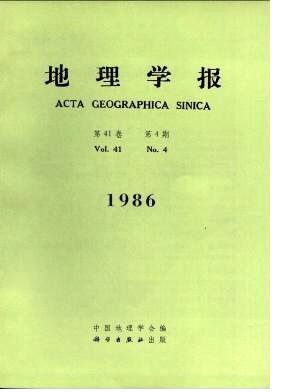Wu Chen, Wang Zihui, Xu Qinghai
In pluvial-alluvial fan regioms, the depth of shallow-hurried paleochannels are 3 to 20 metres, in the middle of the fluvial plain the depth are of 10 to 30 or 35 metres, in the delta regions are about 5 to 25 metres. The paleochannels had a radiate shape in the pluvial-alluvial fan regions belt patterns in the middle of the fluvial plain regions and reticular patterns in the delta regions. They ,stretch 30 - 60 km in pluvial-alluvial fans, 300 - 600 km in the seashore delta regions and 300 - 350 km in the middle of fluvial plain regions. Usually they are 5 - 10 km in width, the widest sections are 15 - 20 km and composed of mid-sized sand mixed with pebbles at the apex of the pluvial-alluvial fans, medium-fine sand in the lower parts of the pluvial-alluvial fans, fine silt on the fluvial plain. They are 10 - 20 metres in thickness and at most they may increase to 25 metres. The floor of the shallow-burried paleochannels are made up of brown yellow clay sand and sand clay on the pluvial-alluvial fans, brown-red clay and sand clay on the fluvial plains, and grey muddy clay on the seashore deltas.According to the synthesis data of the paleochannel sedimental structures and facies of Yongding river in Beijing plain (representing the pluvial-alluvial fans), the Yellow river, Zhanghe river and Hutouhe river in the central and southern parts of Hebei plain and in the north of Shantong plain (representing the fluvial plains), and Luanhe river in the east of the plain (representing the seashore deltas), the paleochannels can be divided into two sedimental cycles: The first is the lower one, mainly made up of pure, better selected light grey-green or light grey-brown medium-fine sand and fine sand of which are accompanied by some charcoal and tree branches and many shell remains of Lam protula. Under the sand layers, the erosion surfaces of the clay and sand clay are stagnant fluvial sediment composed of grinded calcarous nodules and spheroids clay. The second cycle, the upper one, is composed of muddy silt and muddy peat with brown-grey color and is accompanied by many bhell fragments-of Mollsca and a few Lamprotulas. From the 14C dating, the sediments of the first cycle was-formed in 38,000 to 7500 yr. B. P., corresponding to the fluvial facies deposition of the late Pleistocene and early Holocene. The sediments of the second cycle was formed between 7,500 - 2,500 yr. B.P. corresponding to the deposition of rivers and lakes of the middle Holocene. But the clay sand, sand clay and clay of the floor of paleochannels were formed 38,000 yr. ago, corresponding to the deposition of fluvial and lacustrine facies of Yumu interglacial stage.
